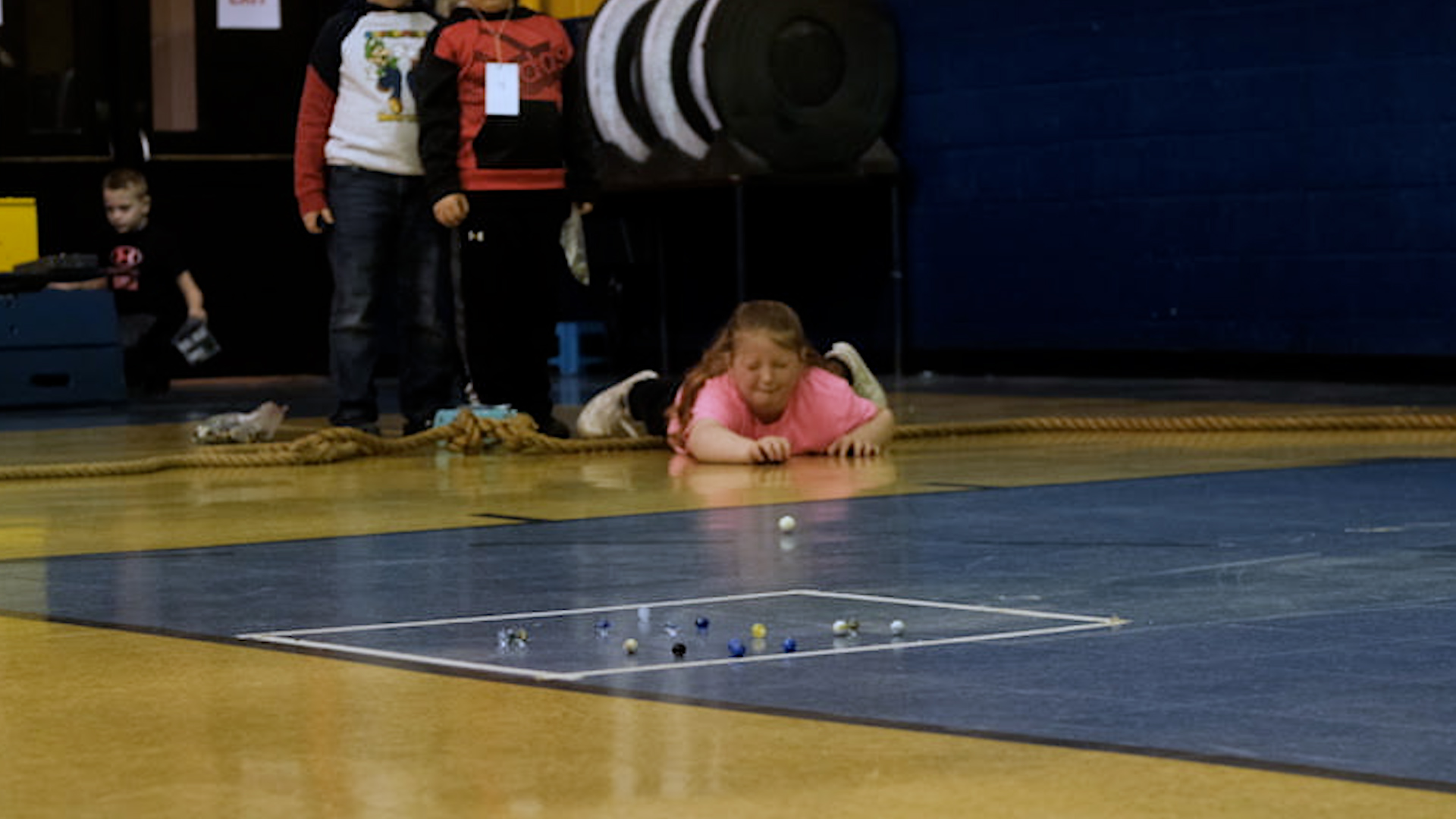Schoolyard games come and go, but for kids in one community, marbles still rule.
Also, this year marks the anniversary of some country music milestones, including the 40th anniversary of Floyd, Virginia’s Friday Night Jamboree.
And we remember West Virginia’s first person in space, Jon McBride.
In This Episode
- Marble Madness Lives On In Boone County
- Country Music Milestones and The Floyd Country Store
- The Blue Ribbon Queen of Russell County, Virginia
- Remembering Jon McBride
Marble Madness Lives On In Boone County
Zack Harold/ West Virginia Public Broadcasting
Some playground games never go out of style – hide and seek, tag, and Duck, Duck Goose. Kids today still play those classics. Every spring, the students of one Boone County elementary school still get excited for a game that’s over a hundred years old. Folkways reporter Zack Harold had the story.
The Vaccine Divide In WV
West Virginia lawmakers have been arguing over whether to loosen long-standing vaccination requirements. But how do parents and doctors feel about that? Emily Rice visited a pediatrician’s office to learn more.
Country Music Milestones And The Floyd Country Store
Mason Adams/West Virginia Public Broadcasting
This year is the anniversary of many country music milestones, among them the Friday Night Jamboree at the Floyd Country Store in Virginia. Mason Adams took us there for a visit in 2022.
The Blue Ribbon Queen Of Russell County, Virginia
A staple of county and state fairs are the annual craft competitions, where everyone from 4H kids to the local dentist brings their finest quilts, pumpkins or peanut butter fudge to be judged for cash, prizes and bragging rights.
Few have been as successful as Virginia’s Linda Skeens, who has won hundreds of blue ribbons.
In 2023, producer Bill Lynch spoke with her about competing at the fair and her favorites.
Remembering Jon McBride
NASA astronaut Jon McBride died August 7. He was 80. McBride was the first astronaut from West Virginia, and the only West Virginian to pilot a shuttle mission. Jennifer Levasseu is curator of space history at the National Air and Space Museum. She spoke with WVPB’s Curtis Tate about McBride’s legacy.
——
Our theme music is by Matt Jackfert. Other music this week was provided by Paul Loomis, Frank George, John Blissard, Dinosaur Burps and Blue Dot Sessions.
Bill Lynch is our producer. Zander Aloi is our associate producer. Our executive producer is Eric Douglas. Kelley Libby is our editor. Our audio mixer is Patrick Stephens. We had help this week from folkways editors Nicole Musgrave and Chris Julin. You can find us on Instagram and Twitter @InAppalachia.
You can send us an email: InsideAppalachia@wvpublic.org.
You can find us on Instagram, Threads and Twitter @InAppalachia. Or here on Facebook.
Sign-up for the Inside Appalachia Newsletter!
Inside Appalachia is a production of West Virginia Public Broadcasting.
